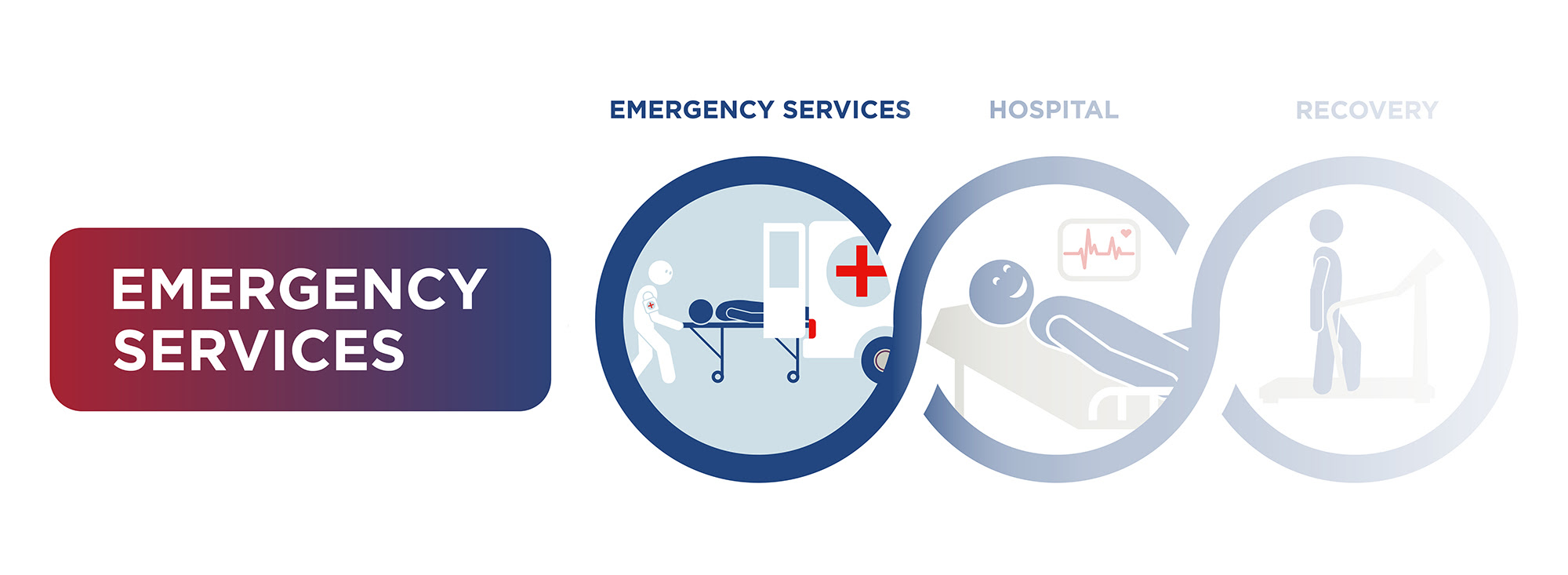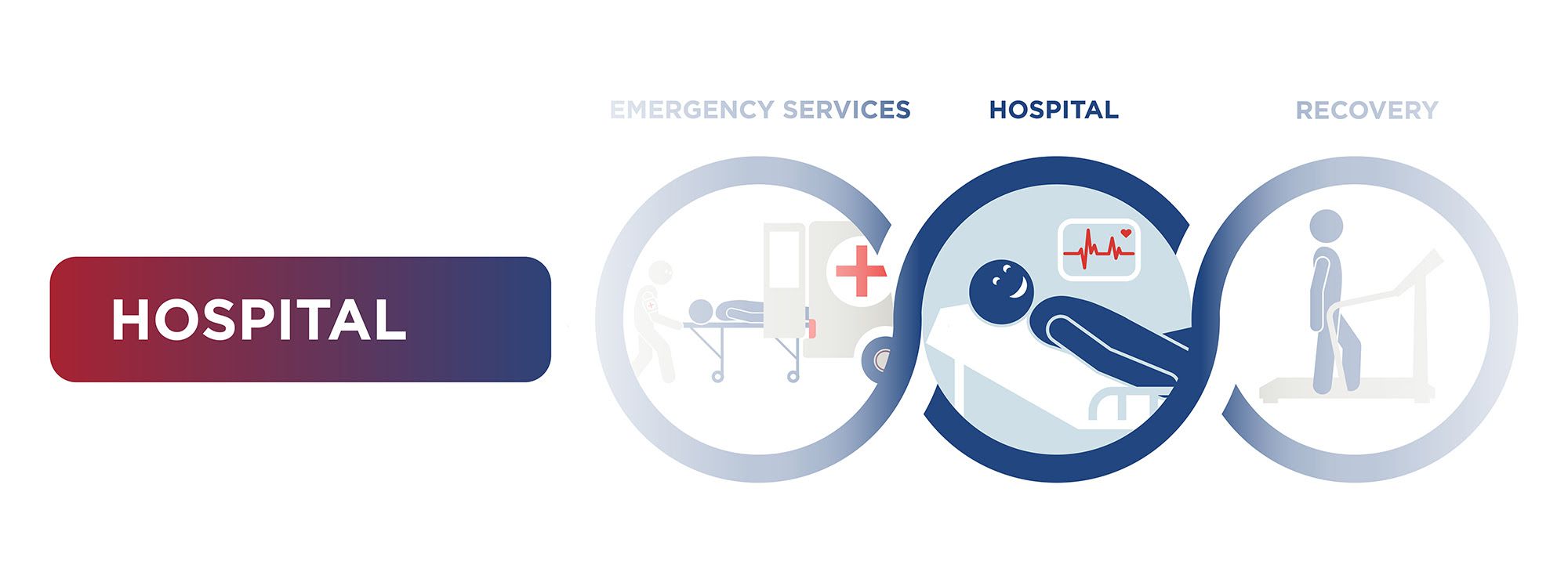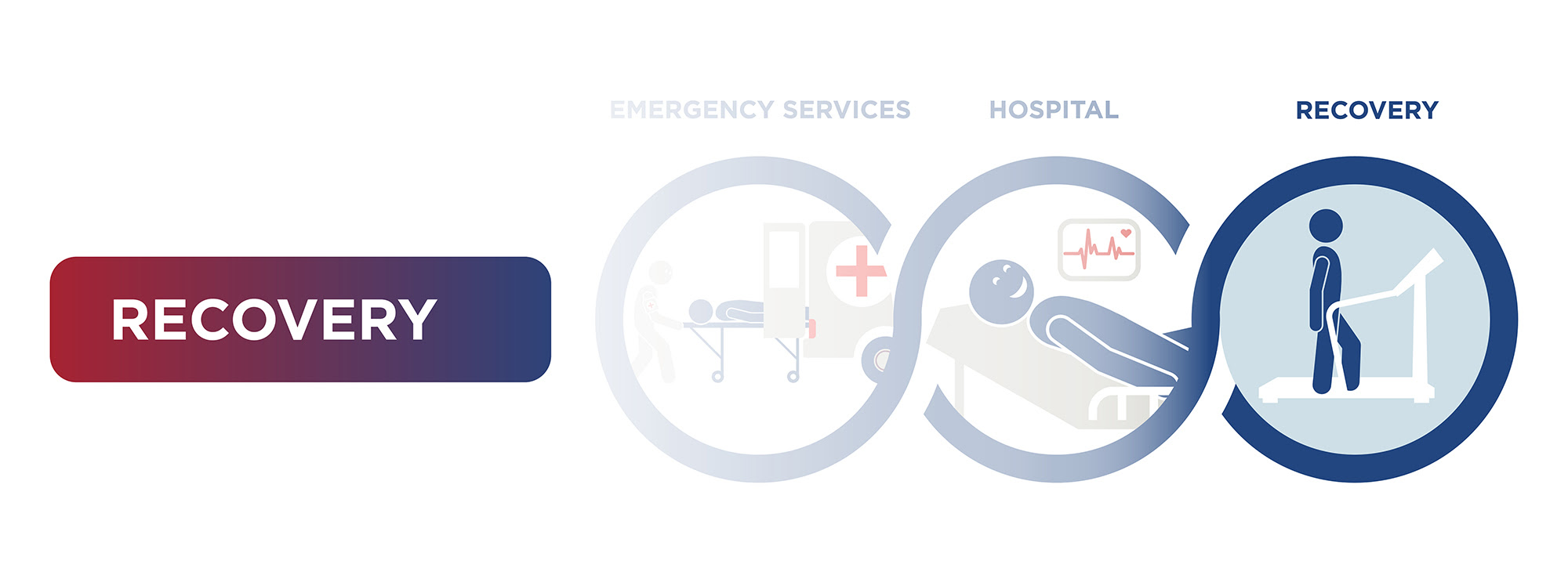Videos on this page
The Chain of Survival https://cellaed.io/ 
Empowered Series Episode 1. An Introduction to The Chain of Survival
Whether you know a little, or a lot about sudden cardiac arrest, cellaed.io have created 'Empowere'd to help you respond if someone close to you experiences a sudden cardiac arrest.
You’ll learn important skills like how to help someone survive sudden cardiac arrest, and how your home, neighbourhood and community can be better prepared to save lives.
In this first episode, we explore the 'Chain of Survival' – developed by some of the world’s leading experts in emergency response, to give a sudden cardiac arrest patient their best chances of survival.
The Chain of Survival https://cellaed.io/ 
Empowered Series Episode 2. The first link in the Chain of Survival - Recognising a sudden cardiac arrest.
Would you recognise a sudden cardiac arrest if it happened right in front of you? Seeing someone collapse without warning can be confronting. Many people freeze in the moment.
In the first episode of Empowered, cellaed.io introduced the 'Chain of Survivall – those critical first steps to give someone their best chance of surviving a sudden cardiac arrest. Now, we’ll explore the first link in the Chain.
Watch this short video to recognise the signs of sudden cardiac arrest, and how they’re different to a heart attack.
The Chain of Survival https://cellaed.io/ 
Empowered Series Episode 3. Calling for Help.
This Empowered episode from cellaed.io is about the second link in the Chain of Survival for sudden cardiac arrest - Calling the Emergency Services.
The Chain of Survival https://cellaed.io/ 
Empowered Series Episode 4. Hands Only CPR.
CPR, or cardiopulmonary resuscitation is a critical link in the Chain of Survival.
As we saw previously, sudden cardiac arrest is caused by an electrical or mechanical issue in the heart, stopping the pumping of blood to the brain, lungs and other organs.
CPR is very simple, and anyone can do it - you don’t have to be a medical professional. For a person in cardiac arrest, immediate CPR, even if it isn’t perfect, is the best chance they have to survive.
In this issue of Empowered, we explain how to perform CPR and how your actions can help save a life.
The Chain of Survival https://cellaed.io/ 
Empowered Series Episode 5. Defibrillation.
Using a defibrillator is a critical step in the Chain of Survival.
This episode of Empowered explains how an AED (automated external defibrillator) works, giving people who experience cardiac arrest the best chance of survival and recovery.
Right now, most AEDs are available as public access defibrillators — commonly found in shopping centres, airports and government buildings. AEDs are rarely available in residential settings and very few are owned by individuals for personal use. Unfortunately, 4 out of every 5 out-of-hospital cardiac arrests occur in the home, do you know where your nearest defibrillator is? Seaford Defibrillator Locations
The Chain of Survival https://cellaed.io/ 
Empowered Series Episode 6. Emergency Services.
In previous episodes of Empowered, we’ve talked about the critical steps in the Chain of Survival that rely on you to help someone survive sudden cardiac arrest. This included calling emergency services, who'll stay on the line with you until an ambulance arrives.
This episode of Empowered explains what to expect when the professionals arrive.
Chain of Survival - Episode 6 - Emergency Services
Emergency Services
The nature of emergency response to cardiac arrest depends on where you live and may include fire fighters, paramedics, doctors, nurses, or police. Responders will be specially trained in the treatment of cardiac arrest.
It’s important to avoid pausing chest compressions until emergency responders tell you that they’re ready to take over. They’ll continue performing CPR and remove your AED to start using their professional defibrillator which gives them more detailed information and control.
When ambulances arrive with paramedics, nurses or doctors, they may place a breathing tube and an IV to deliver medications. Adrenaline is sometimes used to enhance the effect of CPR on blood flow, and other types of medications can help to achieve a normal heart rhythm.
Emergency responders know that if CPR and an AED has been used within minutes of the cardiac arrest, the person has the best chances of survival.
Your readiness to act by calling emergency services, starting CPR and using an AED can make all the difference.
In our next Empowered instalment, we’ll share what happens when the patient arrives to hospital.

The Chain of Survival https://cellaed.io/ 
Empowered Series Episode 7. Getting to Hospital.
In our previous episode of Empowered we explained what to expect when Emergency Services arrive to the scene.
In this episode we explain what happens when the ambulance gets the patient to the hospital.
Emergency responders will decide when it’s the right time to transport a patient to the hospital for more advanced medical care. This often occurs after they’re able to restart the heart beating again.
Once in the hospital, nurses and doctors work to stabilise the patient. This may involve putting the patient in an induced coma and carefully managing body temperature to protect the brain.
Once the patient is stable, the team will start working out what caused the cardiac arrest in the first place. Depending on what they find, they may recommend medications, surgery, or an implantable cardioverter defibrillator (ICD), to reduce the risk of cardiac arrest happening again.
Your readiness to act by calling emergency services, starting CPR and using an AED can make all the difference – not only to the patient surviving, but also to their recovery.

The Chain of Survival https://cellaed.io/ 
Empowered Series Episode 8. Recovery from Sudden Cardiac Arrest.
In previous episodes of Empowered, we’ve explained the critical steps in the Chain of Survival to give someone the best chances of surviving.
This episode explains what to expect on the road to recovery after surviving a sudden cardiac arrest.
Often survivors are at first critically unwell. It takes time to recover.
It’s normal to have no memory of the event and it’s common to experience a range of emotions. Although many survivors have little to no permanent damage from the event, some people have to learn to live with new physical and mental challenges.
The doctor may suggest lifestyle changes to reduce the risk of another cardiac arrest. Practical help may also be needed with everyday activities.
The process of getting 'back to normal' is different for everyone. Some patients and even responders may need support with their mental health as well, as they come to terms with the magnitude of what has happened.
Studies have shown that the steps which rely on you to help in the Chain of Survival - including starting CPR and prompt defibrillation - have a significant impact on minimising disability and optimising a persons quality of life after cardiac arrest.
What you do in those first few moments can make all the difference, not only to the patient surviving, but also to them making an excellent recovery.
We’re here to save lives.
Tell your friends!
Would your friends know what to do if they saw someone collapse from sudden cardiac arrest?
Spread the word!
Opens your email program

What is a defibrillator? The British Heart Foundation
This animation explains what a defibrillator is, and how to use a defibrillator on someone who is having a cardiac arrest. For more information on defibrillators visit: https://www.bhf.org.uk/defibs
How to Use a Defibrillator (AED) - First Aid Training - St John Ambulance
If someone is unresponsive and not breathing normally, you may need to use an AED (automated external defibrillator) to restart their heart. This St John Ambulance training video shows you what a defibrillator is and how to use an AED. Learning how to use a defibrillator could be life saving.
Find out how to use a defibrillator (AED): https://www.sja.org.uk/get-advice/first-aid-advice/how-to/how-to-use-a-defibrillator/
Learn more life saving skills with St John Ambulance first aid training courses: https://www.sja.org.uk/courses/
For more information follow us on Twitter https://twitter.com/stjohnambulance or Facebook https://www.facebook.com/SJA